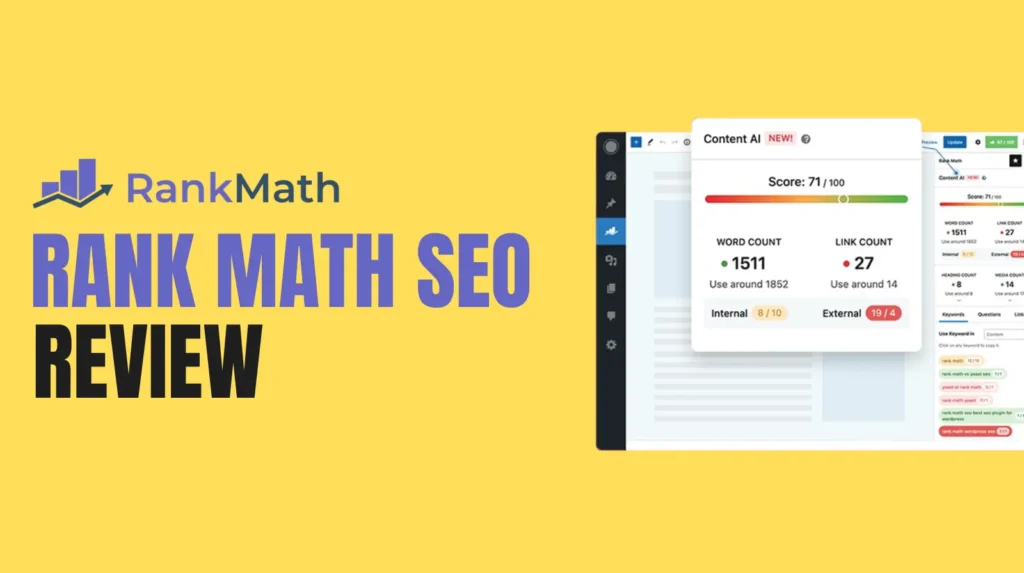Artificial intelligence is revolutionizing the world of UX design. With the rise of AI UX design tools, designers now have powerful ways to create more intuitive, personalized, and efficient digital experiences. These tools use user experience AI to automate complex tasks, generate data-driven insights, and accelerate the entire design process. If you want to stay competitive and create user-centric products, understanding how to leverage these AI-powered tools is crucial.
In this comprehensive blog, we’ll explore the best AI UX design tools available today, how user experience AI enhances the design workflow, key benefits and challenges of adopting AI, and future trends shaping the industry. Whether you’re a seasoned UX professional or just starting out, this guide will help you harness the full potential of AI in user experience design.
What Are AI UX Design Tools and Why Is User Experience AI Essential?
AI UX design tools are software solutions powered by artificial intelligence that assist designers at every stage of creating user interfaces and experiences. These tools employ machine learning, natural language processing, computer vision, and data analytics to improve design accuracy, speed, and personalization.
User experience AI refers to the application of AI techniques specifically aimed at understanding and enhancing how users interact with digital products. It analyzes user behavior, predicts needs, and automates repetitive design tasks to deliver better UX outcomes.
Traditionally, UX design required hours of manual wireframing, prototyping, user research, and testing. AI UX design tools streamline these workflows by automating mundane tasks like layout adjustments and content generation, allowing designers to focus on creativity and strategy. Meanwhile, user experience AI provides insights based on real user data to inform design decisions and optimize interfaces for maximum usability.
Adopting AI UX design tools and integrating user experience AI is now a necessity for designers who want to create efficient, data-driven, and personalized user experiences.
How AI UX Design Tools Use User Experience AI to Revolutionize Design
The magic behind modern AI UX design tools is their use of user experience AI to elevate design quality and speed. Here’s how:
Automating Repetitive Design Tasks
User experience AI enables tools to handle tasks such as resizing components, adjusting color palettes, or generating layout options automatically. This reduces tedious manual work and speeds up design iterations.
Creating Personalized User Interfaces
By analyzing individual user behaviors and preferences through user experience AI, AI UX design tools can generate adaptive interfaces that change dynamically based on user context. Personalized UI improves engagement and satisfaction.
Providing Data-Driven Design Insights
User experience AI analyzes user interaction data, including click patterns, scrolls, and dwell times. These insights guide designers in refining navigation, content placement, and visual hierarchy, improving usability.
Accelerating Prototyping and Feedback Loops
AI UX design tools powered by user experience AI quickly transform rough sketches or wireframes into interactive prototypes. This rapid prototyping allows for earlier testing and faster user feedback incorporation.
Enhancing Usability Testing Accuracy
Simulating user interactions using AI models helps detect potential pain points before product launch. User experience AI identifies problematic workflows, helping designers fix issues proactively.
Top AI UX Design Tools Empowering Designers with User Experience AI
In 2025, many AI UX design tools are leading the charge in combining design capabilities with user experience AI. Let’s look at some of the top tools transforming UX workflows.
Adobe Sensei: Smart Automation and Personalization Engine
Adobe Sensei integrates AI and machine learning into Adobe Creative Cloud apps. It automates tasks such as image editing, layout suggestions, and content-aware fills.
Using user experience AI, Sensei analyzes how users interact with designs and recommends optimizations. UX designers rely on Adobe Sensei for faster design processes and smarter, data-backed creativity.
Uizard: AI-Driven Rapid Prototyping and Design Conversion
Uizard uses user experience AI to convert sketches, wireframes, and even text descriptions into high-fidelity digital prototypes instantly. This accelerates early UX design by allowing quick experimentation and validation.
Its AI understands design intent and adapts the output accordingly, empowering designers with a rapid prototyping tool that needs minimal technical skills.
Sketch2Code: Bridging Design and Development Seamlessly
Sketch2Code leverages AI to transform hand-drawn UI sketches into clean HTML code. It uses user experience AI to recognize design components and generate responsive frontend elements.
This tool enhances collaboration between UX designers and developers, reducing manual coding efforts and ensuring design fidelity.
Hotjar: Behavioral Analytics Powered by User Experience AI
Hotjar captures user interactions through heatmaps, session recordings, and surveys. Its AI analyzes these data points to identify patterns such as user frustration or engagement hotspots.
UX designers utilize Hotjar’s user experience AI insights to optimize layouts, navigation flows, and content positioning for superior usability.
The Grid: AI Website Builder with Adaptive UX
The Grid designs websites automatically by analyzing content and brand identity using user experience AI. It produces layouts, color schemes, and typography tailored to maximize user engagement.
UX designers can leverage The Grid to prototype site concepts rapidly and test different adaptive design approaches.
Framer AI: AI-Assisted Interactive Design
Framer AI enhances Framer’s prototyping platform by suggesting improvements for layouts, animations, and responsiveness using user experience AI.
It helps UX designers create interactive prototypes optimized for engagement and usability quickly.
Usetiful: Personalized User Onboarding Experience Builder
Usetiful uses user experience AI to analyze user behavior and tailor onboarding flows dynamically. It personalizes tooltips, guides, and tutorials to improve product adoption and reduce churn.
UX designers benefit from AI-powered onboarding to enhance new user experiences effectively.
Fronty: AI-Powered Code Generation from Design Files
Fronty converts Photoshop or Sketch design files into clean HTML and CSS using AI. This tool automates the handoff process between designers and developers while maintaining design accuracy.
User experience AI ensures the generated code supports responsive, user-friendly interfaces.
Benefits of Integrating AI UX Design Tools and User Experience AI
Leveraging AI UX design tools powered by user experience AI delivers many advantages:
- Increased Efficiency: Automating manual tasks frees designers to focus on creativity
- Data-Driven Decisions: User behavior insights improve design quality
- Personalization: Adaptive UIs increase user engagement and retention
- Faster Prototyping: Rapid creation and iteration reduce time to market
- Improved Usability: Early detection of pain points enhances product quality
- Better Collaboration: AI-generated specs and code facilitate smoother workflows
- Consistent Design Language: AI enforces style guidelines for brand coherence
By integrating these tools, UX teams can deliver superior user experiences that align with business goals.
Challenges and Considerations in Using AI UX Design Tools
Despite their promise, AI UX design tools require thoughtful implementation:
- Balancing Creativity and AI: Designers must avoid overdependence on AI suggestions to preserve originality
- Data Privacy and Security: Handling user data responsibly when using AI analytics is vital
- Learning and Adoption: Some AI tools have a steep learning curve
- Customization Needs: AI-generated designs often need human tweaking to fit brand personality
- Cost: Advanced AI UX tools may be expensive for smaller teams
UX designers should see AI as a collaborative assistant rather than a replacement.
Future Trends in AI UX Design Tools and User Experience AI
Looking ahead, exciting developments are on the horizon:
- Voice and Gesture UX Design: AI tools optimizing conversational and gesture-based interfaces
- Augmented Reality (AR) UX: AI-powered design for immersive AR experiences
- Emotional AI: Interfaces adapting dynamically to user emotions
- AI-Driven Accessibility: Automating accessible design practices for diverse users
- Generative Design: AI producing numerous design alternatives for rapid experimentation
Staying current with these trends will ensure UX designers leverage the latest AI UX design tools effectively.
How to Choose the Right AI UX Design Tools for Your Workflow
Choosing the best AI UX design tools depends on your unique needs:
- Identify whether you need AI assistance for prototyping, user testing, code generation, or analytics
- Evaluate the tool’s ease of use and learning resources
- Check compatibility with your current design and development software
- Consider scalability as your projects grow
- Look for tools with strong support communities
Try free trials to test usability and fit before investing.
Conclusion: Embrace AI UX Design Tools and User Experience AI to Elevate Your Designs
The future of UX design lies in harnessing AI UX design tools powered by user experience AI. These technologies empower designers to create smarter, faster, and more personalized user experiences.
By integrating AI into your design process, you unlock efficiency, data-driven creativity, and better user engagement. Whether you are a beginner or an experienced UX professional, adopting these tools will future-proof your skills and amplify the quality of your designs.
Start exploring the top AI UX design tools today and transform your user experience design approach.








